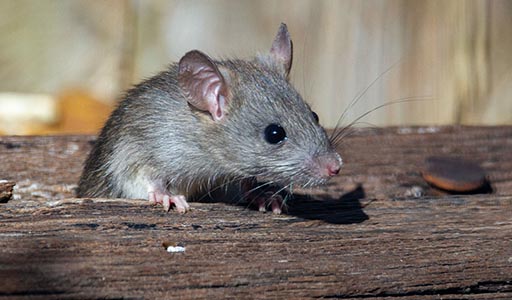Roof Rats

Roof Rat Information
Roof rats are small rodents with brown and black fur and white bellies. These rats get their name from their tendency to seek shelter in the upper level of buildings and structures. Once inside your home, roof rats may cause damage with their teeth as well as by spreading potentially dangerous diseases. Whether you live in an overpopulated city, rural countryside, or suburbia, you may be all to familiar with the sound of roof rats in your attic. Like palm rats in Florida, these rats can also nest in trees or areas with shrubbery.

What does a Roof Rat look like?
Physical characteristics of roof rats include sleek coats that are usually gray, black, or brown with white underbellies. Their bodies measure about seven to eight inches long, and they have even longer tails that are roughly eight to ten inches in length.

What does a Roof Rat eat?
Roof rats prefer fruits, vegetation, and nuts to make up the majority of their diet. They also eat insects and snails. However, when sources are limited, roof rats consume anything they can find. This opportunistic behavior drives the pests into homes where they scavenge for leftover scraps, pet food, and trash.

Roof Rat habitats
Roof rats live in warm and tropical regions of the U.S. Lands covered in dense vegetation and located near water are the preferred habitats of these pests. Their nesting sites include parks and areas near ponds, particularly in trees and shrubbery. Farms and sheds also create protective shelters for the rodents and substitute as nests when vegetation is scarce.
Frequently Asked Questions
Though they’re born hairless, baby roof rats develop rapidly, often growing hair within the week. After two weeks, their eyes open and they begin to explore their surroundings. Young roof rats are usually completely independent of their mothers after three months, which is also when they can begin reproducing. This only helps roof rat infestations grow, as the pests are known to have up to three litters per year of anywhere between five and eight baby roof rats.
The two species of rat that most frequently nest in human residences are Norway and roof rats. Differentiating between them by sight is easy, as one is much larger than the other. They are also recognizable by their feces. Roof rat droppings are smaller than those of Norway rats, measuring an average of one half of an inch in length. They are black and curved with tapered ends, while Norway rats produce brown feces with blunt ends. Roof rat droppings are rarely found in clusters because the pests defecate while walking, whereas Norway rats leave their pellets in groups.


